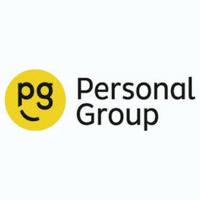Financial wellbeing communication in three simple steps

There are now many financial wellbeing products available, from financial education to debt consolidation and tax-efficient childcare schemes, and there is a rising demand for initiatives that can help staff achieve financial stability.
However, despite the obvious importance of a financial wellbeing strategy, it is not a benefit that will sell itself to employees without a little help. To ensure it receives proper attention and usage, communications must be targeted and effective. This is a task that many employers might find daunting, but it can be achieved with three simple steps.
1. Really get to know your audience
To ensure that your staff are fully engaged with your financial wellbeing offering, it is important to consider which financial concerns are affecting your employees and promote your services accordingly. Employees approaching retirement would most likely be interested in information regarding their pensions, and how to get the most out of their investment. While younger employees might be interested in employer loans to help them buy their first car or make their way onto the property ladder.
2. Personalise your communication methods
Older members of your workforce might prefer talking by telephone, email, or face-to-face, while younger members may prefer digital channels, such as texts or push notifications. In our current diverse workforce, focusing too heavily on one method of communication can end up leaving large sections of the workforce in the dark.
To ensure that all staff members are being accounted for in your communications strategy, you should consider the makeup of your workforce, and their personal quirks. It might not be possible for larger companies to speak to each staff member individually, but asking people what they want from communications is the easiest way to make sure you’re giving it to them, so perhaps using a pulse survey might come in handy here.
3. Optimise your communication processes
It’s crucial that your benefits offering and your communication methods are incorporated into your other wellbeing initiatives. According to the UK Employee Benefits Watch 2016/17: transformation to wellness (2017) report, 68 per cent of employees want seamless access to their entire benefits offering. As a result, employers should make sure everything can be found in the same place, and that your communication methods tie in with the benefits platform – either by incorporating them into push notifications or an internal comms page, or by directing employees to their benefits hub to access each new communication.
Employers must look beyond physical and emotional wellbeing solutions to fully support their employees’ wellbeing. Unfortunately, with the majority of employee benefits, it’s not just a case of plug in and play. However, this shouldn’t be seen as a disadvantage, but rather an opportunity to introduce a new, useful benefits offering that is unique to your workforce. And, by following these simple steps, you will be able to communicate your fully functioning wellbeing solution efficiently and effectively, making your staff aware that the help they need is available if and when they need it.
This article was provided by Personal Group.
Supplied by REBA Associate Member, Personal Group
Personal Group provides the latest employee benefits and wellbeing products.







